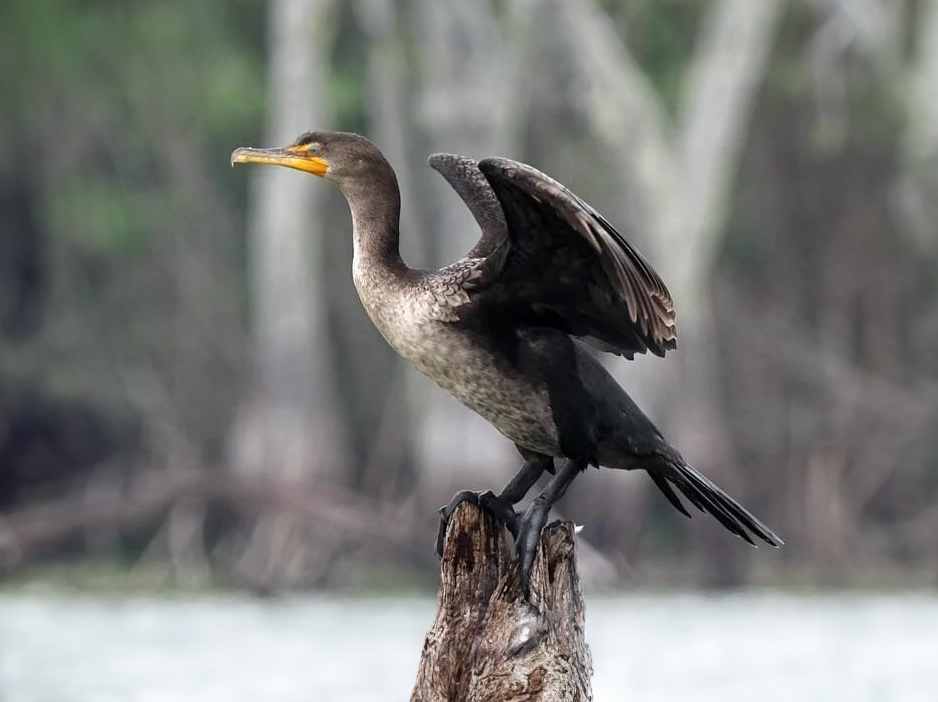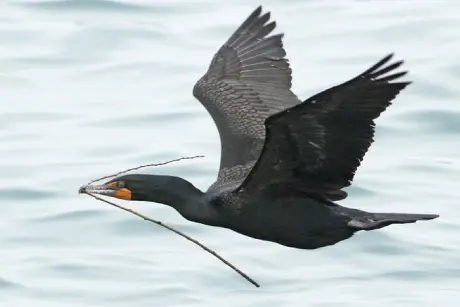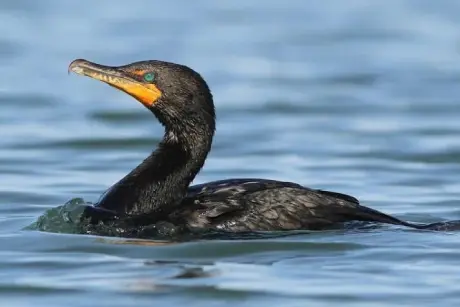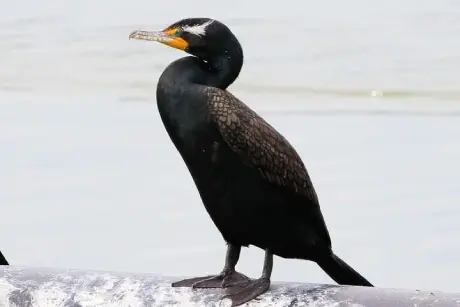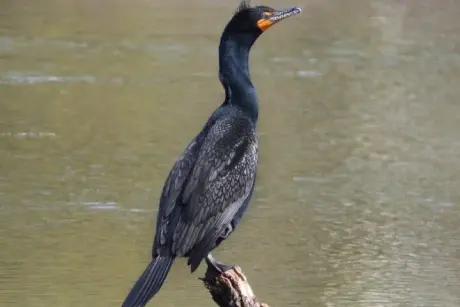Behavior
Double-crested cormorants are gregarious birds that are almost always near water. Their main two activities are fishing and resting, with more than half their day spent on the latter. When at rest, a cormorant will choose an exposed spot on a bare branch or a windblown rock, and often spread its wings out, which is thought to be a means of drying their feathers after fishing


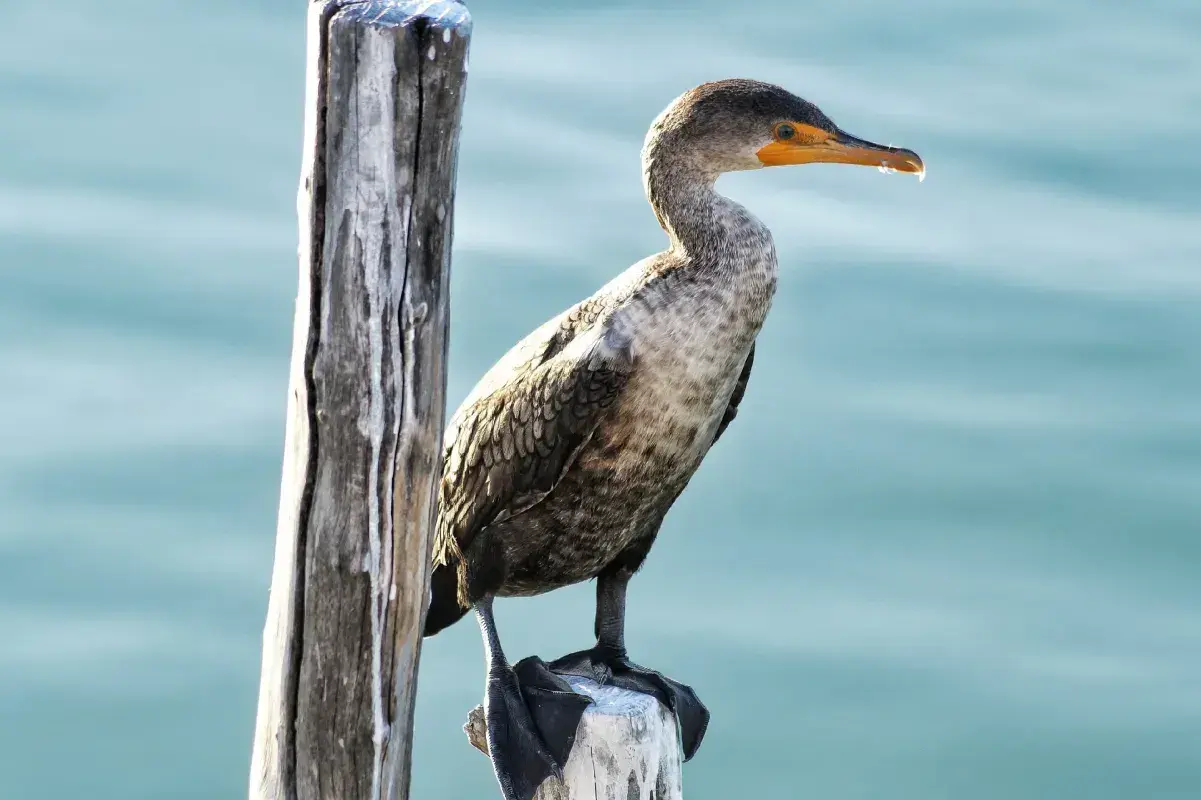
.webp?width=1200&height=600&name=Ave-Cormoran-isla-contoy%20(1).webp)

